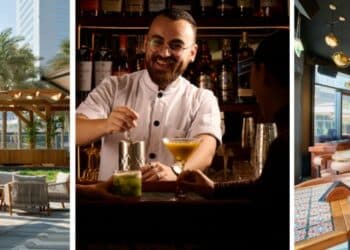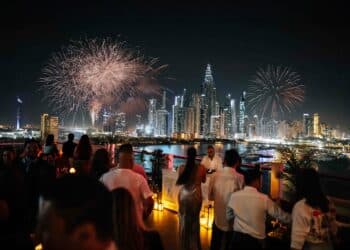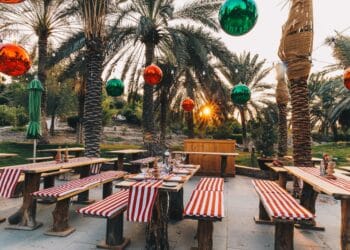Canadian chef Brian Voelzing explains the difference between a regular steakhouse and Dubai’s first ever American ‘Meatery’
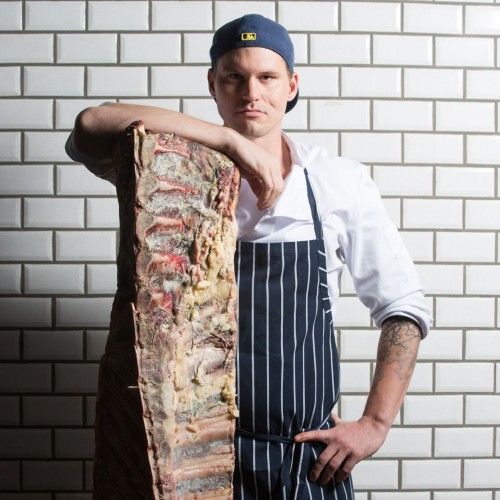
Following the closure of MJ’s steakhouse last May, Dubai’s first American ‘Meatery’, The Hide, opened its doors in October 2015, with Darry Downs as general manager, Nick Cuadrado as executive concept development chef, and Brian Voelzing leading the culinary team as head chef.
Operated by Jumeirah Restaurant Group, The Hide is tucked away inside Al Qasr hotel at Madinat Jumeirah, lending the restaurant’s name its double-entendre. While operated by Jumeirah Group’s independent restaurant arm, The Hide is nevertheless located within a five-star hotel and Voelzing admits there has been the occasional eyebrow raised over the casual look and feel of the restaurant from guests expecting a fine-dining experience.
“We do get some people asking where the fancy cutlery is, but it’s finding that balance. We don’t want to do stuck-up service where you get 12 knives and forks,” Voelzing says.
Trained at Le Cordon Bleu in Ottawa, Canada, Voelzing was in Sydney before he moved to the UAE, and prior to that he worked in London as chef de partie in four AA Rosette restaurant, Chapter One, and as sous chef in the Royal Albert Hall where he cooked for guests of the BBC proms and for royalty. He later joined forces with brand chef Nick Cuadrado, who introduced him to Jumeirah Group.
The staff had already been recruited when Voelzing arrived at the 209-seat restaurant, so one of his biggest challenges was getting the front-of-house team trained up on how to explain and deliver the ‘Meatery’ concept to guests – particularly those who had served for five years previously in MJ’s Steakhouse.
“We’re not just serving steak and boring salads,” the Canadian chef tells Catering News. “We put chicken and waffles on the menu but we confit the chicken in duck fat and bread it with herbs, deep fry it and serve it with fois gras and maple syrup.
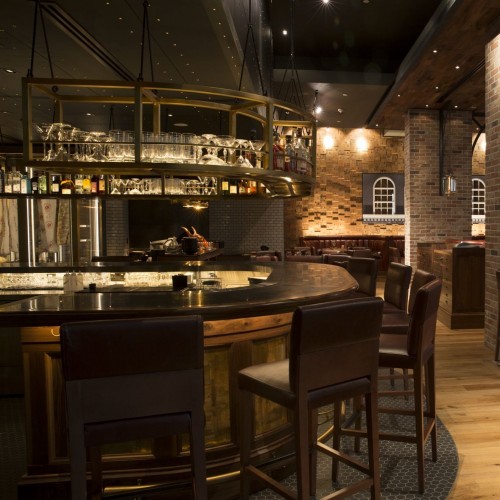
“We’re not a steakhouse, but we have steak. We’re doing twists on all the classics, so rather than creamed spinach, we’re doing creamed kale. We’ve got a tomato salad but we’re using heirloom tomatoes and avocadoes, so we’re just using much better ingredients.”
Classic cooking techniques such as brining, smoking, curing, and home-made duck pastramis and prosciuttos are further differentiating factors, and this complements the venue’s raw, rustic vibe, with leather upholstery, brick walls and unfinished wooden tables.
“It’s big flavours, and very good ingredients prepared properly – that’s the way I look at it, and obviously there’s a big focus on meat.”
One of the major menu hits has been the DIY Steak Tartare made with rose veal, which allows guests to partially prepare the dish themselves. The chef blends the meat with egg yolk, which has been heated to a temperature of 63°C, right before it curdles. A Caeser cocktail (which typically contains Clamato, hot sauce, Worcestershire sauce and vodka) is reduced down to remove the alcohol content and is added to the tartare before the diner seasons it using garnishes and a spice grinder, which contains five different peppercorns.
And if someone orders a butcher’s cut, it is delivered to the table along with a meat cleaver. In the kitchen, a nose to tail practice is implemented as much as possible with secondary cuts often used, such as hanger, flank, and wagyu flat iron steak, which is one of the favourites due to its high marbling content.
“We use a lot secondary cuts, which most restaurants don’t necessarily use. They are a bit more difficult to work with and not as tender, but if you prepare them properly they are really nice.
“We try to grill everything and we do a lot of marinating. The hanger steak we do sous vide and the flank is just done with proper seasoning. Generally, we just go for proper seasoning, on the grill, nothing too out there. We just keep it simple to get the most flavour out of the meat possible,” says Voelzing.
The Hide also puts emphasis on dry-aged meats and has its own dry age cabinet where the temperature and humidity are controlled to exact percentages and degrees and the meat is butchered by the chefs in-house.
Voelzing explains that the dry-aged Spanish beef, supplied by Repetoire Culinaire, is a bespoke cut. “The cows live to seven years, which is very old for a cow and they live in the mountains, completely free range… nobody else in the UAE is allowed to have this cut of beef,” he says.
The meat used in The Hide is mainly organic, which according to Voelzing, contributes to its flavour. The restaurant also uses organic chicken from France, which is brined for eight hours to keep it moist and well-seasoned. “You can get chicken here but the chicken from France is much better,” Voelzing says, admitting that he also sources most of his vegetables from abroad for quality purposes.
“Everywhere else you work it’s about how local you can go, whereas [in Dubai] everything is imported. We can get better products from other places. It’s not like we won’t use local produce – there are some good things – but we try to get the best quality and a lot of the time it is coming from somewhere else,” he says.
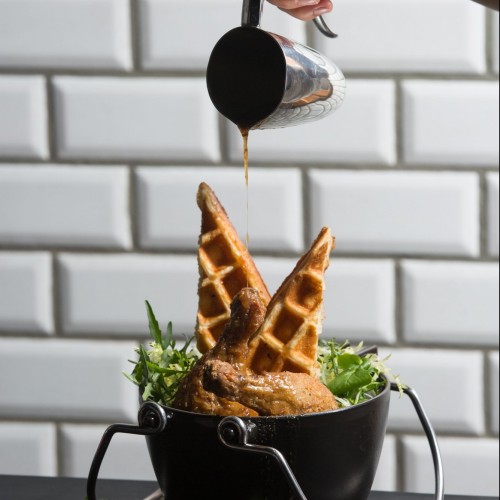
And while reprinting menus and getting approvals can be time consuming, Voelzing is also concerned with maintaining seasonality and aims to update the menu every four to six weeks.
“On the winter menu we have things like kale and broccoli but coming into spring you’re going to see more lamb on the menu, and asparagus and broad beans,” he says.
Voelzing is keen to add that as well as the food, beverages are a major aspect of The Hide’s offer, and a range of whiskies and bourbons fit with the American theme. The team is also working on infusing alcohol with unusual flavours – such as marshmallow-infused vodka – for the cocktail menu. And having brought Anand Nanjan, senior sommelier from Burj Al Arab on board, the restaurant is proud to offer 54 wines by the glass.
Looking to the future, Voelzing explains that the focus is on refining everything and simply “trying to become better”. Having been open just six months, The Hide has already gained a strong reputation in the market, and the team has garnered plenty of positive feedback and reviews, with a number of guests returning. However, Voelzing admits that he would like to see it busier, particularly with more Dubai residents.
“It has been performing well – not as busy as we would like – but I think it’s just getting the name out there,” he says.
“We are trying to focus more on the Dubai locals, the expats who want to go out and have a glass of wine and a meal without breaking the bank. We want people to come in and enjoy themselves.”


